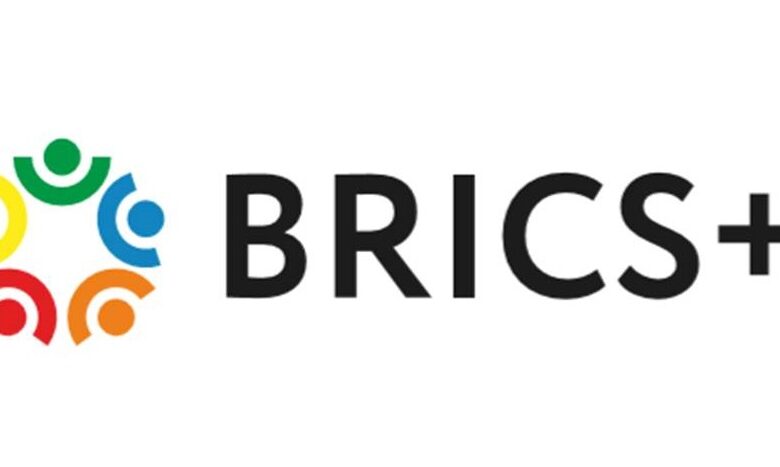BRICS on the Rise: Can Blockchain Forge a Multipolar Future?

The BRICS bloc—originally comprising Brazil, Russia, India, China, and South Africa—has undergone a significant transformation. By welcoming Egypt, Ethiopia, Iran, and the United Arab Emirates (UAE), BRICS has become a formidable economic force, signaling a potential shift in the global order. This expansion fuels excitement about a multipolar world, especially with the possible inclusion of Saudi Arabia. The enlarged group now represents a combined population of 3.5 billion, accounting for 45% of the world’s inhabitants, and boasts economies valued at over $28.5 trillion, or roughly 28% of the global GDP. Notably, with Iran, Saudi Arabia, and the UAE, alongside Russia’s substantial crude oil production, BRICS+ now controls an estimated 44% of the world’s crude oil production.
A Surge in Interest: BRICS as a Counterweight?
Last week, Russia’s Presidential Spokesman, Dmitry Peskov, acknowledged the “significant interest” in BRICS, hinting at the need for criteria for new members. This growing appeal is echoed by Bolivian President Luis Arce, who emphasized BRICS’ role in ushering in “a fairer and more balanced” world order. These statements resonate with a global sentiment seeking alternatives to established power structures. Additionally, Turkey’s attendance at the last BRICS meeting underscores its interest in aligning with the bloc, potentially paving the way for further collaborations and expansions.
A BRICS Basket Currency? CBDCs as Building Blocks
Several BRICS members, notably China, the UAE, and Russia, are leading the exploration of Central Bank Digital Currencies (CBDCs). China has piloted its digital yuan internally, while the UAE has focused on infrastructure development and domestic applications, also participating in the mBridge project. These efforts position these countries as frontrunners in CBDC development. However, creating a single CBDC for all BRICS nations poses significant challenges. A more feasible option might be a basket of CBDCs linked to major BRICS currencies ” BRICS Bridge” . This basket currency could facilitate trade settlements within the bloc, reducing reliance on traditional financial channels and potentially laying the groundwork for a more interconnected BRICS financial system.
China – Arab States: Rise of Blockchain in Cross-Border Payments
The 10th Ministerial Conference of the China-Arab States Cooperation Forum (CASCF), which concluded recently, signals a potential boom for blockchain technology in cross-border payments across the region. A key theme was leveraging local currencies and CBDCs to streamline financial transactions. This focus aligns with BRICS’ broader strategy to enhance financial independence and reduce reliance on the US dollar. The collaboration between China and Arab states, with Russia’s backing, underscores BRICS’ emergence as a strategic pathway for reducing dependence on US influence.
The Weaponization of the Dollar: A Catalyst for Change?
The use of US sanctions as a political tool has eroded the dollar’s absolute dominance. This, coupled with BRICS’ exploration of CBDCs and a potential currency basket, suggests a strategic move by these rising economies to reduce dependence on the US dollar in international trade. Signs of this shift are already evident in bilateral trade settlements between China and countries like Brazil, Saudi Arabia, and the UAE. These developments raise a crucial question: Could the weaponization of the dollar accelerate the rise of alternative trade settlement mechanisms, potentially led by the BRICS bloc?
BRICS and Beyond: A New Dawn for Global Finance
The future of BRICS hinges on its ability to navigate internal economic disparities and forge a unified vision. However, the potential of blockchain technology to empower the bloc and reshape the global financial landscape is undeniable. BRICS, along with other emerging economies, has the potential to leverage blockchain technology to create a more equitable, interconnected, and prosperous global financial system.





